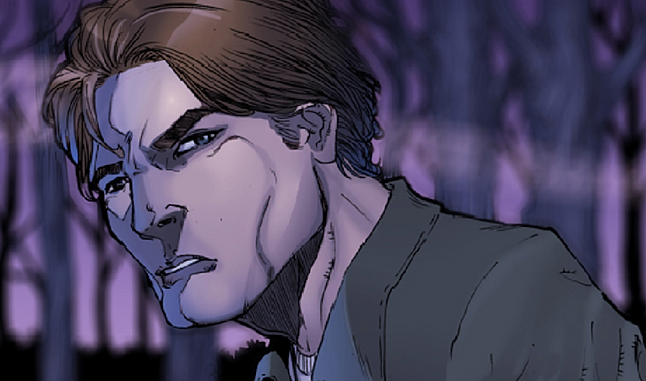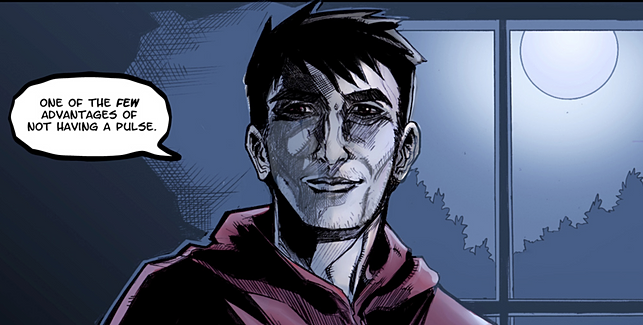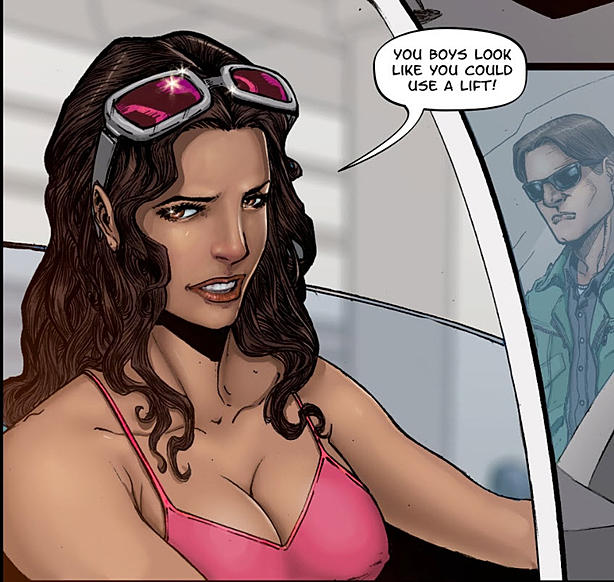Out of nowhere last fall, Dan Mazur sent me an advance copy of his excellent wordless fantasy graphic novel, Lunatic. Lunatic is the story of a late-Victorian woman obsessed with the Moon, or perhaps more correctly, the man in the Moon. I recommend it highly. In fact, I liked it so much I bought a copy for myself when he did a book talk, and sent the first one to Michigan State University's Comic Art Collection. I also reached out to thank Dan, and asked him to do an interview.
First, here's the official description of Lunatic -
The moonstruck Lunatic is an unusual and striking graphic novel in the tradition of wordless books by the likes of Frans Masereel, Lynd Ward and William Gropper. Part fable, part classic adventure in the tradition of Jules Verne, H. G. Wells and Méliès, the tale is told in nearly 200 full-page, wordless images in a variety of media from pencil, pen and ink, ink wash and paint that lovingly evoke the artistic styles of its period setting, and classic illustrators from Charles Dana Gibson and Toulouse Lautrec to Edward Gorey.
The word “lunatic” derives from Latin, meaning “of the moon”, or “moonstruck” and in this sense it describes the protagonist of this story: from infancy she develops a magical, almost intimate relationship with the moon itself, a celestial being who acts as her friend, lover, mentor. Our heroine is a dreamer, an outsider, never feeling like she quite belongs to this world. We follow her through the stages of life, infancy, childhood, youth and adulthood, at each point guided by the moon toward a fateful journey and an unexpected destiny. A timeless and charming story of longing, loneliness and the pursuit of dreams.
What type of comic work or cartooning do you do?
Different kinds, but all of it independent. For my own creative work, I work almost completely independently, and mostly self-published. So I write and draw, whatever I feel like doing. I’ve done some historically-based comics, and some fantasy, some super-hero, but with an ironic take on the genre. Most recently I did my first long-form graphic novel, “Lunatic,” which was published by Fanfare. It’s black and white, a “wordless book,” with one image per page, so pretty much on the arty side of things. But totally accessible, I hope! It has a children’s book feel, but it’s not a children’s story really – at least not by contemporary standards. It’s really a sort of fantasy/fable about life, dreams, disappointments…
 |
| cover art by Kurt Ankeny |
I also work within the Boston Comics Roundtable, which is a collective of cartoonists here in Boston (like what you all do in DC), and I have edited quite a few anthologies within that group, currently working on Boston Powers,which is an all ages superhero anthology, all set in and around Boston. Recommended even for kids not from Boston, though! I’ve also edited and published some themed anthologies through Ninth Art Press, which is my own micropress.
And lastly I do some historical or scholarly comics writing, such as co-writing with Alexander Danner, a few years back, a book called “Comics: a Global History, 1968 to the Present,” and last year an article on The Comics Journal, “Ibrahim Njoya: a comics artist in Colonial-era Cameroon.”
How do you do it? Traditional pen and ink, computer or a combination?
Mostly traditional, pen, brush, ink, ink washes etc., though I make liberal use of Photoshop for touchups, corrections, sometimes combining images. But pretty much I always start with as fully finished a traditional drawing as I can.
In your new book, Lunatic, you used multiple sets of techniques - how come?
It’s partly a conceptual thing: since the book is divided into chapters about different ages in the character’s life, from infancy to middle age, it seemed to make sense to change up something stylistically in each phase of the story. So the changing styles hopefully reflects the changing way the character sees life at different stages.
Also, it was the longest project I’d ever taken on, so I think that I decided to change things up from chapter to chapter to keep my own interest fresh. It was more like doing 8 or 9 short projects in that way.
Is Lunatic an homage to silent movies?
Partly – I couldn’t help but think about Melies’ Voyage to the Moon, and the innocence of early science fiction movies…just building a big rocket and flying to the moon, walking around on the moon as though you could breathe there. The face in the moon of course. And my chapter heading pages are modeled on silent movie caption cards, with the ornate border. It was probably more just a love of the past and the Victorian aesthetic in general, but wordless story-telling in comics relates to silent movies, the purity of it. I had a friend once who was really into silent movies, and she was about my age, so grew up with talkies like everyone else alive today, but she used to say “sound ruined the movies.” Joking, but I like the purist approach. Not that I prefer silent movies myself, or have any scruples about words in comics. MOST of the comics I do have words.
It wasn’t a decision I thought through. I like wordless comics, and have done a few before. Sometimes I just naturally think of a story, and it’s purely visual. Other times the idea couldn’t be done wordlessly.
How long have you been working on it?
I started Lunatic in mid-2016 and finished in early 2020. It was a long time, a lot longer than I thought it would take.
How did you hook up with Fanfare, a publisher that more typically translates work from Europe into America? Is your book for sale by them overseas?
I’ve always liked the kind of books that Fanfare puts out… I happened upon a book of theirs called “A Patch of Dreams” by Hideji Oda, which was the first “alternative manga” type thing I ever saw, and I loved it. Years later, I met Stephen Vrattos, who is Fanfare’s US person… I met him at SPX in fact, and bought some stuff from him, and we hung out a bit… then I think I met Stephen Robson, who runs the company in the UK, also at SPX. I really liked the production quality of their books and their taste. I hadn’t actually submitted a comic to a publisher before ever (except for anthology submissions), so when it came time to “shop” Lunatic I chose a few publishers where I personally knew someone there. Fanfare was top of my list, so Stephen V. helped me get it to Stephen R., and luckily he liked it.
They’re selling it in the UK. So far not in any other countries as far as I know.
So, returning to our standard biographical questions, when (within a decade is fine) and where were you born?
December 19, 1959.
Cambridge, Massachusetts
What is your training and/or education in cartooning?
I was a fine arts major in college, but as far as cartooning it’s all self-education and training… I took a few classes years ago at a school called “Associates in Art” which were actually quite helpful. And of course, the input and examples of other cartoonists, especially the ones I know through Boston Comics Roundtable.
Who are your influences?
I think like most people I have hundreds of influences from a lifetime of comics reading and other input.
Childhood influences: DC comics (Neal Adams & Kirby’s Fourth World especially) and MAD of the 60s and 70s and Peanuts, as well as lots of different children’s book illustrators.
Youth: R. Crumb and other underground cartoonists – but especially Crumb. Not his sexist/ racist stuff as much though… there IS a lot of Crumb work which is neither. The French artists introduced to the US by Heavy Metal, especially Moebius and Nicole Claveloux.
Later on, it was a real revelation to discover Love & Rockets, which brought a lot of the threads I liked in comics together – mature and smart, but also playful and fantastic, and amazingly well-crafted and expressive artwork. I also really got into Scott Pilgrim when that came out, for its playfulness and zaniness and energy, and incorporation of manga ideas.
When working on the Comics: A Global History book, I discovered lots and lots of artists I never really knew about who’ve had a big influence. Shojo manga of the 70s, the “Year 24 group,” for their formal innovations and emotionalism. Yumiko Oshima is a favorite, though her work has never been officially translated. She is less “over the top” than some of them like Moto Hagio or Ryuko Ikeda (who I also love), but has a “quieter” softer approach… makes great use of negative space on the page, her comics are sad & moody and wistful.
Alberto Breccia, the Argentinian artist – just one of the greatest artists who ever worked in comics, and he experimented with different styles and media his whole life, never got into a rut.
Oh but also, there are project-specific influences… so on Lunatic I looked at different types of artists – mostly if not exclusively non-comics artists – for some of the different chapters. I’m working on something new now, and my model is the French artist Fred, and very particularly a comic he did in the early 60s, Le Petit Cirque, which is wonderful and quirky and not like anything else I can think of. To “warm up” for the project I’m doing studies of that comic, just copying panels from it as closely as I can, and hopefully something will rub off on me.
By the way, maybe that’s a good answer for “cartoonist’s block”: copy something you really like.
If you could, what in your career would you do-over or change?
Well… I guess I would have gotten serious about comics a lot earlier… in the late 70s/early 80s when I was in school, there was little encouragement in the culture for comics as art, and I didn’t have the guts to do it anyway – I have huge respect for the artists of my generation who did. I think I understood the potential of the medium then, but just didn’t have the independence of mind to follow it as a passion. But maybe that means I just wasn’t ready, so it’s just as well. I’m kind of glad to be able to publish my first graphic novel at 60… at least I’m not going to get jaded. So, the answer to your question is really “nothing.”
What work are you best-known for?
Ha ha ha. I don’t know. I have the same name as a major mountain climber.
What work are you most proud of?
The next one.
 Your
last book before Lunatic was a history of comics. Can you tell us about it?
Your
last book before Lunatic was a history of comics. Can you tell us about it?
Alexander Danner and I co-wrote it, as I said. I had this idea that comics history, as opposed to history of any other art, tends to be very nationalist and parochial… separate history of comics in separate countries, and here in the US we don’t know much about comics of other lands, especially if they’ve never had a commercial existence here in the US. That was much more true 10 years ago when the book was conceived than it is now, happily. This seemed very different than art history, or film history, or the history of literature or music, where if you know the first thing, you’re likely to know quite a bit about European work, and probably some Asian as well. And the artists along the way in all those fields did too, so there are international trends as well as national “schools” of art, etc. So we set out to do sort of parallel chronologies of what we deemed to be the three major comics cultures: Japan, U.S. and Europe, and especially looking for moments where there were connections and influences between the cultures. It was going to be the ENTIRE history, starting in the middle ages, or whenever, but the publisher Thames & Hudson decided that was too much for one book, so we split it in two, choosing 1968 as the dividing point, for various reasons. And they wanted to do that one first because it had more commercial appeal... but so far we’ve never gotten round to doing “volume one,” which is sort of a shame. On the other hand, it was an enormous amount of work, so I’m sort of content with letting it stay one volume.
I have to say now that I think that while we were trying to bring world comics together as a single field, we left too much out… It was probably as much as we could handle, but I feel bad that there is nothing about the Philippines, Africa, India… I’ve learned SINCE finishing the book how much we left out.
 What
would you like to do or work on in the future?
What
would you like to do or work on in the future?
I have other projects lined up… they continue the completely self-indulgent, whatever-I-feel-like approach. I just hope for variety, and not to bore myself… so there isn’t another wordless book in the near future. But experimenting with different styles and formats will always appeal to me.
What do you do when you're in a rut or have writer's block?
I get down on myself and anxious for a while… then I force myself to sit down and just start. I don’t know any secrets or tricks or rituals, I just find that brute force to get yourself to start is the only way, and then it will work out. I remind myself that anything Is better than nothing.
What do you think will be the future of your field?
I’m hopeful for the future of the printed comic as cherished object, even with the rise of digital comics. I think there will be a place for that. I’m hoping that comics shows will come back after the Pandemic, since that’s an important way for independent comics to find their readership. Honestly, I just hope that the world and humanity survive in recognizable form. Telling stories with drawings will survive if it does.
What cons do you attend? What are your thoughts about SPX? Can you discuss MICE and how you came to found it?
When I started working in independent comics in the aughts, I discovered comics shows like SPX, APE, MOCCA etc., and smaller shows, zine fairs, and loved everything about them. The variety of work, the interaction with the crowd, the fellow-feeling with other cartoonists. Shelli Paroline and I were in BCR at the time, and we felt that Boston should have a show like that. We got involved with the Boston Zine Fair… which in its then-current incarnation was on its last legs, and as it sort of disintegrated, we morphed into MICE (the Massachusetts Independent Comics Expo). I was teaching comics at the Art Institute of Boston, which was then part of Lesley University, and they agreed to host the first one in 2010, and Lesley has been our home for the show ever since (in Cambridge). Its grown a lot, but I think it retains the qualities we were going for to begin with : a warm celebration otf independent comics, like a big creative party for cartoonists and readers.
SPX is the gravitational center of independent comics show, I think. I’m not sure if it was the first, but it’s outlasted some of the others that I first went to (we’ll see which ones return after Covid -- I hope they all do), and it’s a lot of fun because of being held in the hotel where most of the exhibitors stay… a big comics party! I hope to be there again soon.
What's your favorite thing about visiting DC?
I’ve visited DC some over the years – my wife lived there before we were married, back in the 80s so I saw it most back then. When I go to SPX I mostly see the inside of the hotel in Bethesda. But what I like most about DC are the museums – the Hirschhorn, the Phillips, National Gallery, etc. Also a great food town…
Least favorite?
 |
| the original drawing done in my book ordered from HBS |
I guess the whole area is so spread out, so going to SPX I see Bethesda… I have family in McLean, and we go there almost every year for Thanksgiving, and pretty much never get out of McLean, which is a nice place to live, but not much to visit (though we walked past Lyn Cheney’s house, I think).
What monument or museum do you like to visit?
I haven’t been to those art museums in a long
time… I guess the Phillips was my favorite, it’s sort of like the Gardner here
in Boston, in an old house and based on one art collector’s tastes and vision,
from a great period, early Modern Art.
How about a favorite restaurant?
It’s been too long to remember the names of them… but DC was where I discovered Ethiopian food… I think there was a place called Red Sea – it was ages ago but it’s a safe bet there was an Ethiopian restaurant called Red Sea. More recently but still a few years back, I went with some fellow cartoonists to a really good Ethiopian place in walking distance from the Marriott after SPX one year… I think it was called Sheba, at least that’s the only Ethiopian restaurant I can find on Google maps near SPX. If it’s a different one, it looks good anyway.
How has the pandemic affected you?
I've been fine, personally, and able to work at a reasonable pace on my own comics. But a bad time to be coming out with Lunatic and Boston Powers -- that one in particular was pretty much designed to sell to kids at comics shows. I'm looking forward to live events being possible again!




























